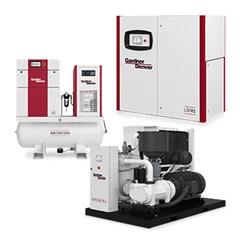Select Your Country/Region
Current Region:
 Global (EN)
Global (EN)
Choose a different country or region to see the content specific to your location
- ARTICLES
- All Articles
- Planning And Overseeing A Compressed Air Audit
A compressed air audit can be critical to a plant’s efficiency and performance, so it is important that you take all the proper precautions to prepare for it.
A properly conducted compressed air audit will show the current state performance of the compressed air system with hard numbers that don’t care about feelings, traditions or product/technology bias.
These numbers, such as the power (in kW) to operate the system, pressure (in PSI) at which the system runs, air flow (in CFM) the system produces, and other metrics (such as dew point and temperatures), are the backbone of the audit. They are at the heart of an honest, data-driven evaluation of a compressed air system.
Properly logged kW, pressure and flow are crucial when making decisions about a compressed air system. When these metrics are accurately audited, a new, lower cost system arrangement can often be planned out and thousands of dollars can be saved.
A compressed air audit is designed to deal with facts and numbers. In doing this it is possible to project, and then verify, energy savings from a reconfigured air system. For most audits, one objective is to lower your cost of producing/ using compressed air.
Auditing involves data logging of information about the compressor system. Ideally, you want to log actual power (kW), pressure (PSI) and air flow (CFM) with logging equipment, rather than calculating these variables from measurements of the others. You can make calculations when necessary if you are careful and follow the correct procedures.
You are trying to set up an efficient compressed air system, not just buy or operate an efficient compressor. A system goes well beyond the compressor into the air dryers, filters, piping and more. System efficiency is what determines what you will pay for air, thus the entire system must be evaluated.
You want good data, but it needs to be supported with great analysis. Great analysis is what will identify big opportunities. A “canned” solution that is the recommended fix for every audit performed is a big red flag—run the opposite direction as fast as possible and find a new auditor.
Solution modeling can be quite complex. If it looks good on paper, take the “trust but verify” approach. Make sure that you are getting in actual performance what the model projected. This will allow you to take dollars to the bank.
And finally, remember...
That no audit at all is better than a poor audit. With the information presented here and some diligence, a compressed air audit, along with the corresponding air system changes, might just be one of the most profitable activities you tackle this year.
Interested in learning more about compressed air audits? Download our whitepaper and learn more about the following topics:
- Getting the Facts Straight, Dispelling Compressor Room Folklore
- Logging Real Data
- System Analysis - Compressors Don’t Operate in Isolation
- Analyzing the Data - Good data with bad analysis delivers bad results
- Modeling a New System

